\
In 2011, venture capitalist and a16z partner Marc Andreessen claimed software was “eating the world.”
\
Using Twitter and Apple as examples, Andreesen argued that software providers would displace legacy institutions and create new business models. Of course, he was right.
\
Today, blockchain is eating the world.
\
Across multiple industries, blockchain technology is disrupting age-long corporate structures and creating business models that are decentralized, secure, and efficient. More telling, the number of enterprises expected to adopt blockchain technology is growing everyday.
\
Even with these facts, many outsiders still doubt the blockchain’s transformational value.
\
That’s why I’ve decided to start a monthly roundup of the best blockchain-based projects. Perhaps by seeing the various applications of blockchain technology, non-believers can start taking this industry seriously.
\
The series will highlight various real-world solutions using blockchain technology. As much as possible, these roundups will cover novel use-cases beyond the usual (NFTs, DeFi, cryptocurrencies, etc.).
\
Also, I plan to highlight products with utility (read: sensible products), so you probably won’t see a “blockchain meets OnlyFans” app on the list.
\
Let’s go!
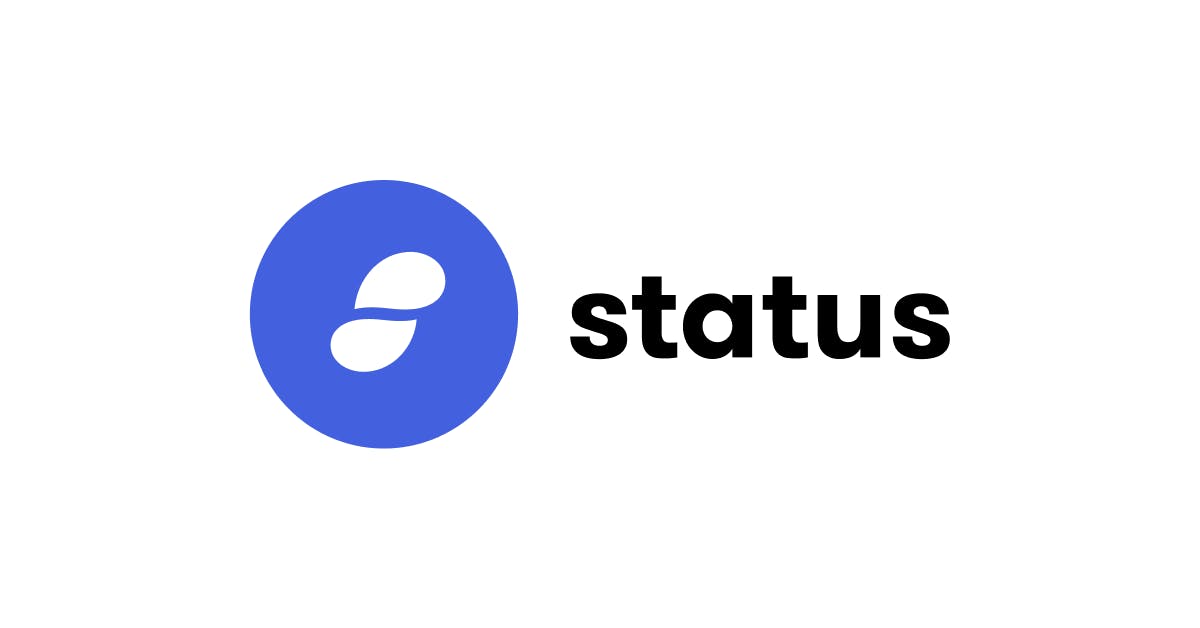
\
Today’s social network users have to face centralization, censorship, loss of privacy, lax security, and many more ills. Many have since launched several blockchain-based social platforms to correct these problems and provide users with a better experience.
\
Social networks running on the blockchain promise greater decentralization, security, privacy, and censorship resistance. And that’s what makes Status truly unique.
\
Status is an all-in-one solution comprising a secure messaging app, cryptocurrency wallet, and Web3 browser.
\
Messages sent on Status’ private messenger use end-to-end encryption, meaning nobody can snoop on messages. The app’s peer-to-peer infrastructure further prevents centralization and protects users from censorship.
\
Anyone can join Status without giving up confidential information, like email addresses, phone
numbers, or bank accounts. Users can also send money in chats via the integrated wallet, making payments faster and cheaper.
\
Status Wallet is a non-custodial option for safeguarding ERC-20 and ERC-721 tokens. Meanwhile, the native browser serves as a gateway to the decentralized Internet, allowing users to access decentralized applications (dApps), exchanges, games, and more.
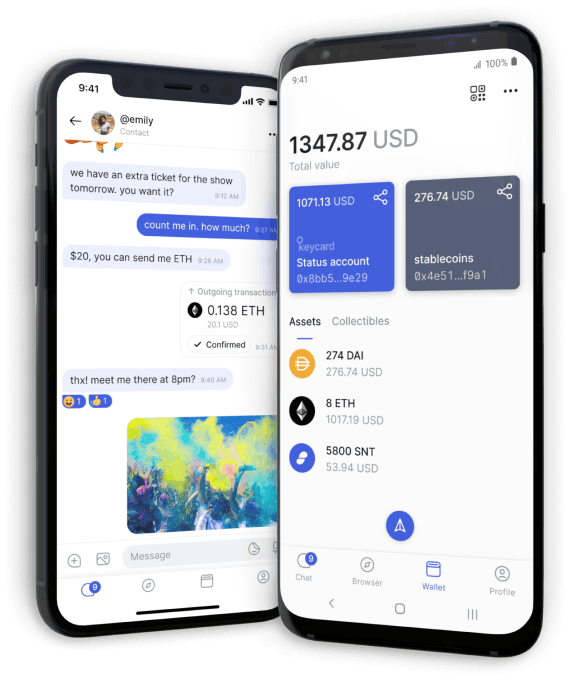
\
Status is free and open-source, although users must purchase the Status Network Token ($SNT) to run certain applications. SNT tokens incentivize users to sustain the network and give holders voting power on major network proposals.

\
Crowdfunding has been the rage ever since Kickstarter and Indiegogo launched, growing to a billion-dollar industry in recent years. Although crowdfunding has provided a way for people to back their favorite projects, there are problems with current crowdfunding models.
\
Perhaps the biggest of these problems is accountability. Crowdfunding platforms have few mechanisms for enforcing accountability, leaving project founders to act as they please. Often, there’s nothing backers can do if projects are delayed or fail to ship products as promised.
\
Pledgecamp solves this problem by applying blockchain technology to the crowdfunding process. The platform uses smart contracts to control the allocation of funds to project creators. Instead of getting paid in full upfront, creators must satisfy project milestones before having more money released to them.
\
Pledgecamp allows project backers to track funds and monitor progress of their favorite projects. And if the project team fails to deliver? Funds locked in escrow are reallocated to donors, while the errant creators suffer sanctions.
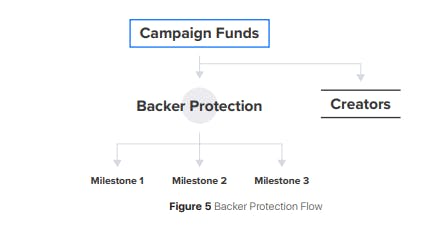
Pledgecamp is a self-sustaining dApp ecosystem running on Ethereum, with its native token (Pledge Coin). Users support projects by buying Pledge Coin, but they can also earn PLG by offering services, like marketing, to project creators, or sharing valuable information via the Knowledge Center.
\
Beyond the security and transparency it offers, Pledgecamp makes crowdfunding more inclusive. Kickstarter is only available to project creators in just 25 countries and users must have a bank account. This cuts off many people from crowdfunding campaigns—namely, users living in unsupported countries and unbanked individuals.
\
Blockchain technology allows people to transact seamlessly and securely across borders. As a result, anyone can launch or fund a project from any corner of the world with Pledgecamp.
\

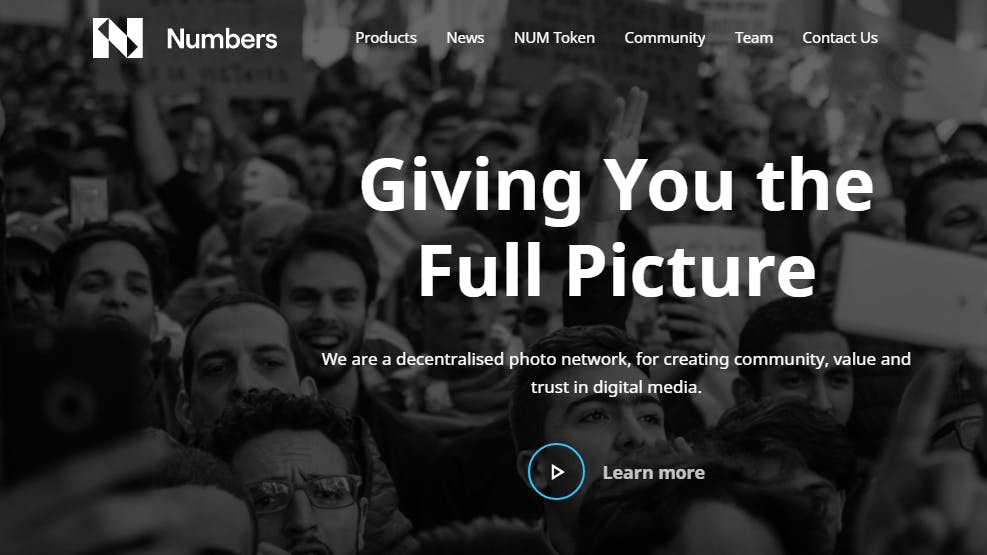
\
A budding photographer takes a great picture and uploads it to Instagram. Within minutes, that image is floating around the Internet without anyone crediting them for their work.
\
Copyright infringement and piracy is a big concern for photographers, with statistics claiming up to 2.5 billion unlicensed images are stolen daily. While stock photography (Shutterstock, iStockPhoto) has reduced unlawful use of images, the problem still persist.
\
Numbers is a decentralized photo network seeking to give creators more control over their work, while restoring faith in digital media. It has been featured on TechCrunch and counts Binance and Protocol Labs as investors.
\
Numbers prevents image theft by securing images with blockchain technology. Details such as who owns the image and when and where it was taken are encoded into the certification seal and stored on the blockchain.
\
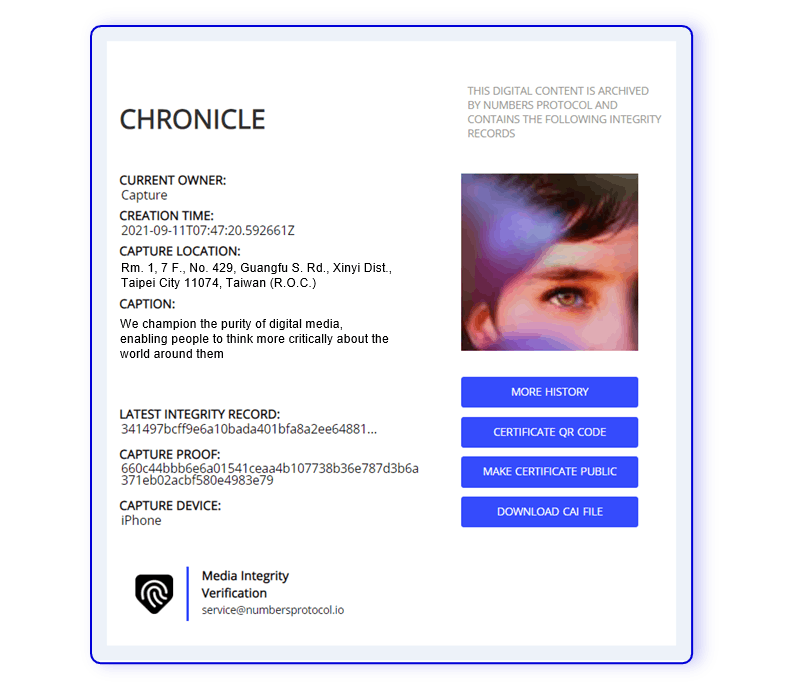
\
The Numbers product ecosystem also includes the Capture app, a “blockchain camera” that automatically generates on-chain metadata for images. Users can turn these great photos into non-fungible tokens (NFTs) and sell them on Capture Club, a marketplace for photo NFTs.
\
For creators, Numbers is the perfect solution for securing ownership of images and protecting intellectual property (IP) rights. Users also benefit since they can verify the history and authenticity of images, potentially reducing image fakery and photo manipulation.
\
Numbers has a native ERC-20 token ($NUM) which users buy to use the various services. For example, users can register copyrights as well as buy, gift, and sell NFTs using their $NUM tokens.
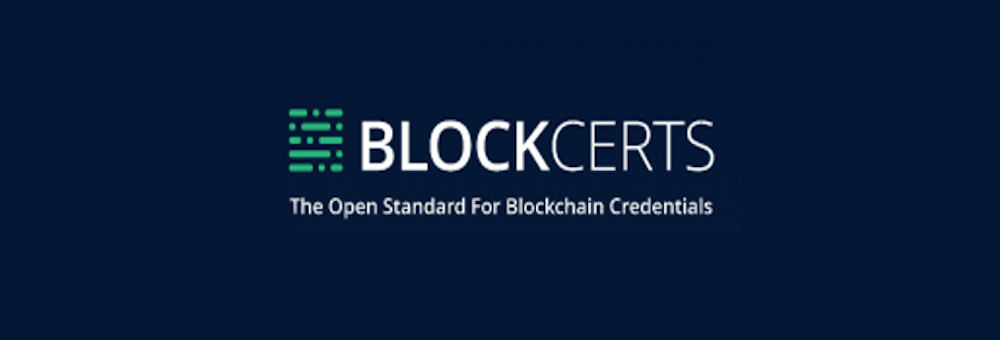
\
Blockcerts is an open standard for creating, issuing, and verifying digital certificates on the blockchain. Blockcerts (“blockchain certificates) can be used to issue academic degrees, certificates, recognition of accomplishments, and many more.
\
If you applied for a job today and submitted your certificate, employers would need to check its veracity by contacting the school. And that is a long, problematic process.
\
With Blockcerts, users truly own their records and can share them with anyone, including potential employers. Employers can verify the validity of Blockcerts for free using the Universal Verifier.
\
Blockcerts is simple to use. To illustrate, let’s imagine a university (Hogwarts) needs issue a Blockcert to Bob:
\
Hogwarts University invites Bob to receive a blockchain credential. Bob sends his blockchain address. Then Hogwarts University hashes the credential on the blockchain.
\
Bob gets a blockchain credential from Hogwarts University, which he shares with a prospective employer. The employer enters Bob’s certificate URL into the Universal Verifier and gets confirmation of the credential’s authenticity similar to the image below:
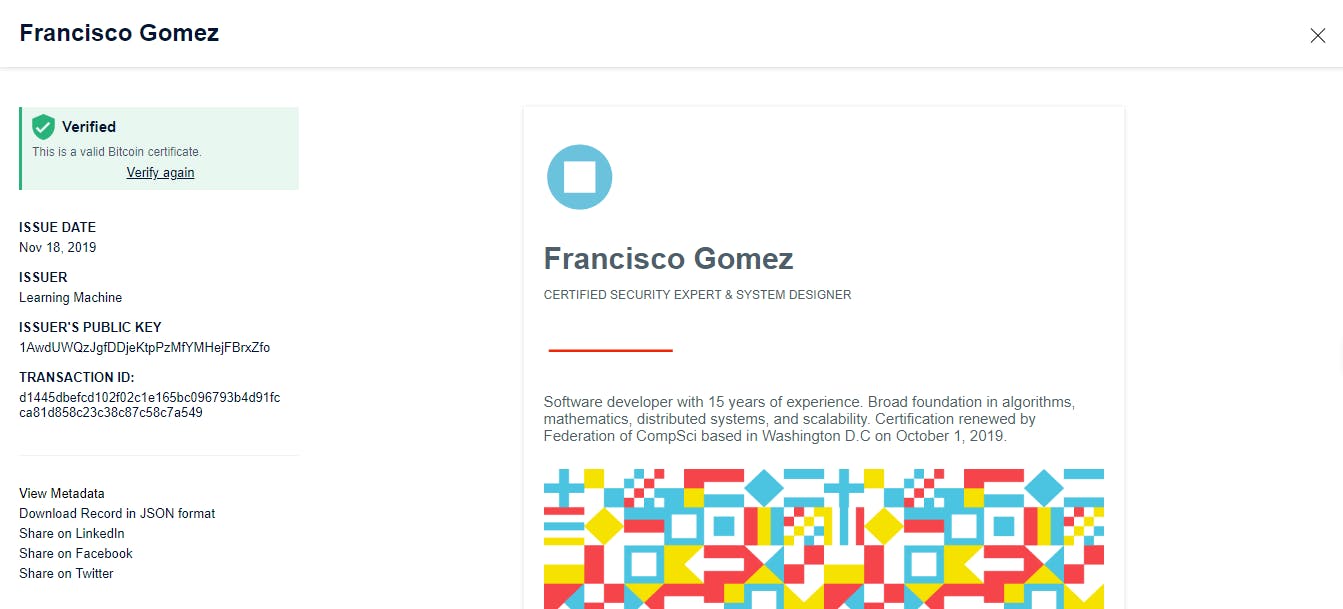
\
Thanks to the blockchain’s immutability, Blockcerts cannot be altered—lest they become invalid. Plus, the Universal Verifier can show important details about the credential such as:
The date of issuance (transaction date)
The issuing institution
The issuer’s public key
The transaction ID
Certificate validity
\
Blockcerts also offers users a wallet to store and share their credentials. Blockcerts are verifiable for a lifetime, so users can still own records even if the institution isn’t around anymore.
\
Here is a list of demo Blockcerts credentials you can verify to see how it works.

\
On May 22 2010, Laszlo Hanyecz bought two Papa John’s pizzas for 10,000 BTC in what is considered the first real-world transaction involving Bitcoin. With Bitcoin trading over $39,000 now, Laszlo’s stash (worth $41 at the time) would sell for $390 million now.
\
The event is entrenched in cryptocurrency lore, inspiring Bitcoin Pizza Day, and an app for ordering pizza using—yes, you guessed it—Bitcoin. The Lightning Pizza app allows U.S. residents order Domino’s pizza from any location and pay with BTC.
\
You’re probably asking, “what is world-changing about a pizza delivery app?” While Lightning Pizza may seem trivial, the Lightning Network on which it operates is anything but.
\
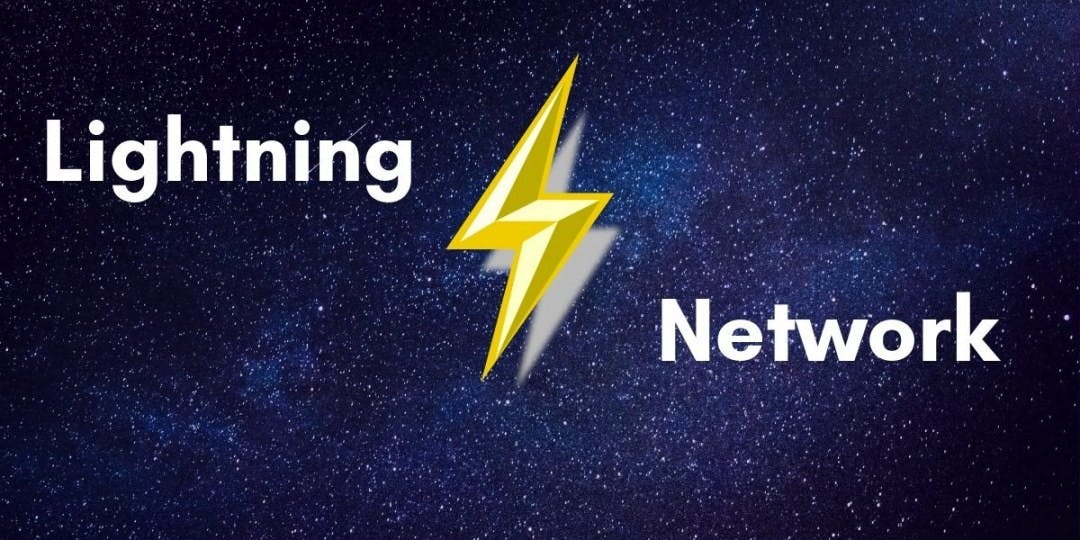
\
Lightning Network is a Layer 2 scaling solution built on top of the Bitcoin Network. Lightning allows users to conduct transactions off the main Bitcoin blockchain, making cryptocurrency payments faster and cheaper.
\
Say you need to buy coffee at Joe’s shop downtown with Bitcoin. Some would describe Bitcoin payments as impractical, given the high transaction costs and long confirmation times.
\
However, Lightning ensures your payment to Joe doesn’t go through the main Bitcoin blockchain. Instead, the money moves through a peer-to-peer, off-chain channel which you create at the start of the transaction.
\
Here’s an illustration of a Lightning payments channel works:
\
At the start of the transaction with Joe, you create a two-way payment channel and deposit some bitcoins. This channel uses multisignature technology, meaning funds deposited cannot be moved without two keys signing the transaction.
\
Think of the channel as a smart contract since it prevents one party from unilaterally moving funds. Every time you buy coffee from Joe’s Shop, both of you sign off on a transaction paying the business.
\
Once the initial deposit is exhausted, both parties can close the channel and have the final transaction recorded on the Bitcoin blockchain. Only the last transaction is recorded, meaning you can conduct multiple Bitcoin transactions without heavy transaction fees.
\
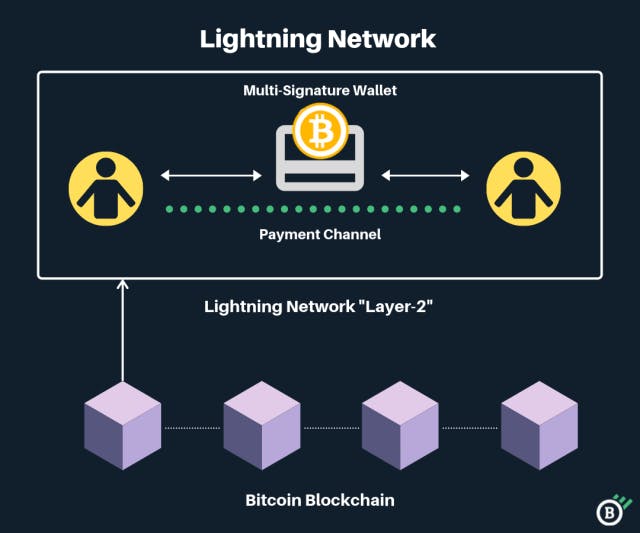
\
Lightning Network channels can process millions of micropayments per second and may revolutionize online payments. Here’s a chart comparing the Lightning Network to other payment solutions:
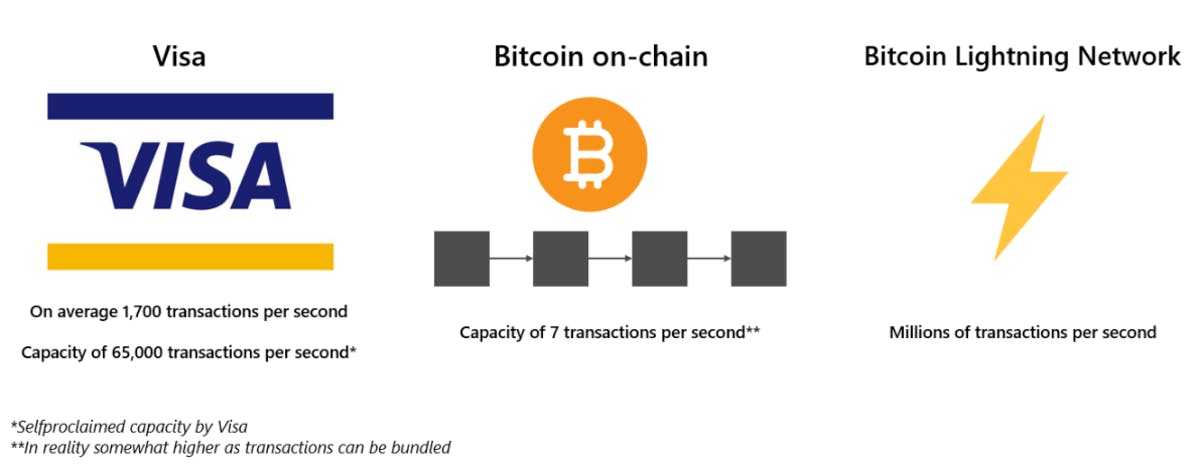
\
Micropayments have many uses, especially for small businesses, as Lightning Pizza shows. But we can also apply the technology to online businesses.
\
Specifically, digital content creators can use micropayment channels to accept small payments (tips, subscription fees) from fans. A good example is Tipping.me, a Lightning-based browser extension that anyone can use to tip their favorite content creators on Twitter.
Final Thoughts
Blockchain technology continues to evolve, with more use-cases appearing. These new solutions promise many benefits—for businesses and consumers—and show that blockchain technology is beyond cryptocurrencies and NFTs.
\
Got any blockchain project(s) you want to see reviewed? Reach out to me with your suggestions!
\
Cover image courtesy of Venafi.com
Read more: hackernoon.com
